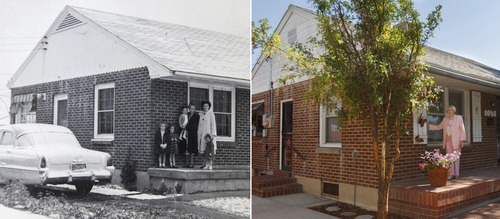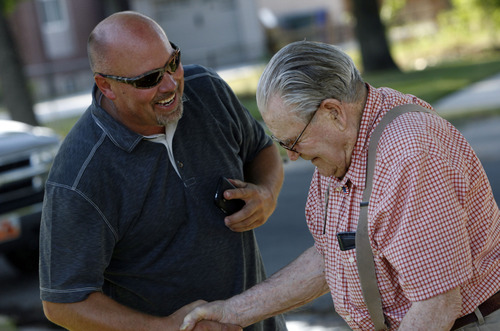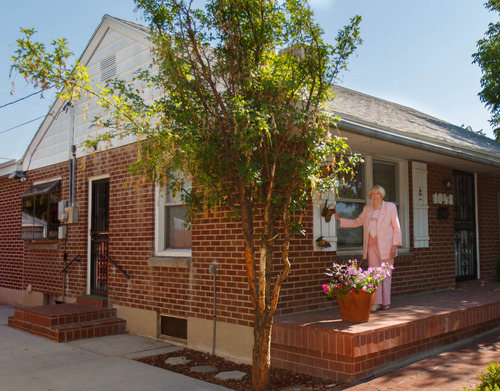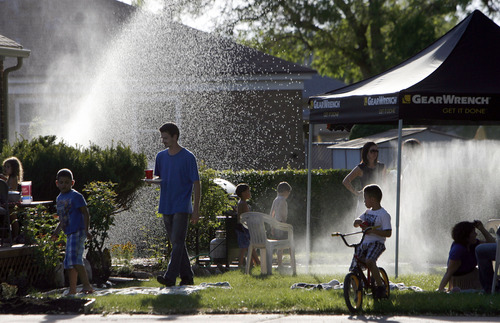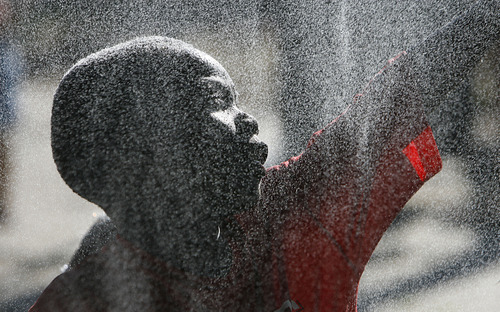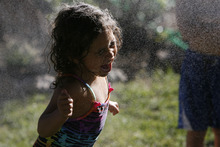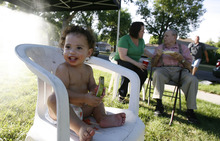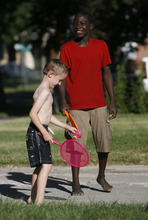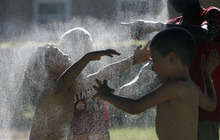This is an archived article that was published on sltrib.com in 2013, and information in the article may be outdated. It is provided only for personal research purposes and may not be reprinted.
This is the first in a series of reports giving Tribune readers an insider's view of life in Salt Lake City neighborhoods.
In the 1950s, young men just out of the military married their sweethearts and moved to Rose Park, an enclave of new red brick houses in northwest Salt Lake City that offered couples the American Dream.
For decades Rose Park, like many Salt Lake City neighborhoods, was predominantly white and LDS. But now there is a new community sprouting up there that is more ethnically and culturally diverse.
Some of the newcomers are immigrants with young families. About 42 percent of the population is under age 17, according to Utah Community Data Project at the University of Utah. And at Rose Park Elementary, 86.8 percent of the students qualify for subsidized lunch, reflecting the low incomes of their parents.
But, like generations before them, these residents, too, see Rose Park as the American Dream. There's even an American Beauty Drive right down its middle.
The trees are taller now — on some streets they create a leafy canopy — but the well-built red brick homes look pretty much like they did half a century ago. Nicely kept yards signal a pride that is echoed by Rose Park's residents, who proclaim their love for the place.
Folks such as Pearl Nelson, 92, and Kenneth Neal, 85, have lived here since the mid 1950s. And they don't like it when east-siders and news reporters lump Rose Park in with other communities west of State Street.
"It's so unfair," Nelson said when crimes committed elsewhere are reported as taking place in Rose Park. "We're fiercely loyal to this place and we're fiercely protective."
For the record, Rose Park is the area north of 600 North from Interstate 15 to Redwood Road.
Neal, who emigrated from Australia, served in the U.S. Army during the Korean War. In 1955, he and his young wife bought a house in Rose Park. It was $300 down and $65 a month on a V.A. 30-year mortgage.
"I had my dad look at this house before I bought it," Neal recalled. "He was a carpenter and knew what he was looking for. He said, 'Buy it.' "
Neal's adult daughter lives nearby and he's content here, but says that, unlike the old days, he doesn't have a lot in common with some of his new neighbors who hail from Mexico, the Balkans, Russia and other places.
He might like to meet 26-year-old Patricia Auger from the west African nation of Liberia. She and husband Mark Auger have three small children who play with other Rose Park kids in the security of their close-knit neighborhood. Patricia met Mark — who grew up here — in Africa, where he worked for a mining interest.
"Everybody knows each other," Patricia said of the area's friendly atmosphere. "We have neighborhood dinner nights and neighborhood barbecues."
She and her children walk to parks and schools and the grocery store. "It's very convenient," she said. "It's walkable and everyone looks out for each other."
Mark's father was a U.S. Marine in World War II and like other young veterans put down roots in Rose Park. Mark and some of his siblings have stayed on and welcome new arrivals.
"A lot of the older people have passed away and new couples are moving in and reinvigorating the community," Mark said. "It's done a complete cycle. When we were young, there were tons of kids to play with. And now, it's like that again."
Not far away is the residence of Armando and Laralynn Victoria. Armando is from central Mexico and Laralynn is from a small town in Idaho. He holds a master's degree and is a financial officer for a large Salt Lake County-based construction firm. She is a stay-at-home mom who cares for the couple's two young sons.
Rose Park is becoming a true melting pot, Laralynn says. In this neighborhood, diversity and sense of community go hand in hand.
"People say, 'You are from Rose Park? How is the crime down there?' But there is very little crime," she said. "We know all our neighbors, and we all look out for each other."
And like other young Rose Park couples, they believe they got a good deal on their house, Armando said.
"We don't spend all our money on our mortgage," he said. "We build our retirement account and our educational-saving plan for our kids."
Kevin Moritz agrees. He is a high school teacher and was looking for a home for his young family. They liked Sugar House but were unsure they could afford a place there. He had never been to Rose Park but had heard some biased remarks about it. Nonetheless, on a real estate agent's advice, he toured the area anyway.
"We looked at some of these homes [in Rose Park] and it was, oh wow," he said. "I have friends who come over here and say, 'It's beautiful.' Crazy, huh?"
Neil Draper, 84, has owned and operated Neil's Pro Service Station at the corner of 600 North and 1200 West since 1964. He calls Rose Park the "best neighborhood" in Salt Lake City. He refuses to retire, but his sons, Chris and Scott, help him run the full-service garage.
"We get a lot of different nationalities and they all seem to get along," Neil said. "They are common people around here and they appreciate what you do for them."
Although it's a five-minute drive to downtown, Rose Park remains a small village and its denizens like it that way.
Heather Hans is originally from Las Vegas, but has lived many places throughout the West, including Utah. She is white but remembers growing restless in Bountiful and calling her real estate agent to say, "I want to live someplace with diversity."
Now she lives on Lafayette Drive in Rose Park and her neighbors are from Cameroon, Liberia and Mexico, among other places, and include Salt Lakers who discovered the area.
"This neighborhood is the best thing to ever happen to me," said the 39-year-old single woman. "This is a place where I belong. People know me and they love me."
Rose Park demographics
Population • white — 37 percent; minorities — 63 percent
Age • Under 5 years — 18.9 percent; 5 to 17 — 23.1 percent; 18 to 24 — 11.1 percent; 25 to 64 — 13.4 percent; 65 and over — 11.7 percent
Students eligible for free or subsidized lunch • Rose Park Elementary — 86.8 percent; Newman Elementary — 77.1 percent; Northwest Middle School — 88.8 percent. (To qualify, household income must be less than $43,600 for a family of four.)
Sources: Utah Community Data Project, Bureau of Economic and Business Research, University of Utah. The data apply to Salt Lake City's District 1, to which Rose Park belongs. —
Rose Park • Some points of interest
Rose Park Community Festival every May — a street fair with food and entertainment
July Fourth Rose Park Community Breakfast at Riverside Park
Historic Steenblik Dairy (no longer operating) on the east side of Riverside Park
The Veterans Flag Pole is at 1000 West and 900 South


